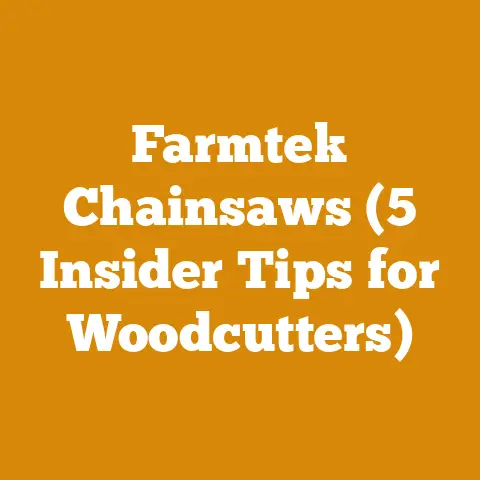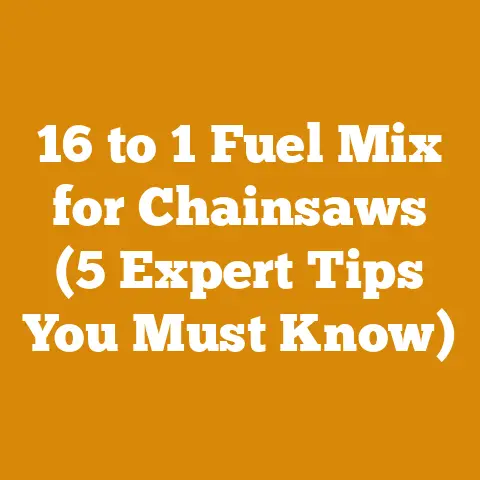Titan Clamp On Pallet Forks (5 Expert Tips for Efficient Wood Handling)
Introduction: The Unsung Hero of Wood Handling – Titan Clamp On Pallet Forks
As someone who’s spent a considerable part of my life wrestling with logs, timber, and firewood, I can tell you that efficient wood handling is the linchpin of any successful wood processing or firewood preparation operation.
The Titan Clamp On Pallet Forks, in particular, have proven themselves time and again in my own projects.
Their simple design belies their incredible strength and adaptability.
Why am I so enthusiastic about these forks?
Durability.
In my line of work, equipment takes a beating.
From dragging logs through muddy fields to lifting heavy bundles of firewood, the forks have consistently held up.
I’ve seen other pallet forks bend, crack, and even fail under stress, but the Titans have remained steadfast.
This reliability translates directly into increased productivity and reduced downtime, which, as any seasoned woodworker knows, is worth its weight in gold.
In this guide, I’m going to share my top 5 expert tips for using Titan Clamp On Pallet Forks to maximize your efficiency and safety in wood handling.
These tips are born from years of experience, countless projects, and a deep understanding of the challenges involved in working with wood.
Whether you’re a weekend warrior preparing firewood for the winter or a small-scale logging business owner, these insights will help you get the most out of your Titan Clamp On Pallet Forks.
1. Understanding Your Load and Your Limits: Matching the Forks to the Task
Before you even think about attaching those forks to your tractor or skid steer, it’s crucial to understand the capabilities of your equipment and the demands of the task at hand.
This is not just about avoiding damage to your forks; it’s about ensuring your safety and the safety of those around you.
Know Your Equipment’s Capacity
The first step is to consult your tractor or skid steer’s operator manual.
Find the rated lift capacity at the pivot points where the pallet forks will attach.
This is the maximum weight your machine can safely lift.
Remember that lift capacity decreases as the load is further away from the machine.
The Titan Clamp On Pallet Forks themselves have a rated capacity, typically listed in their specifications (often around 4000 lbs per pair, but always confirm this).
Never exceed either the machine’s or the forks’ rated capacity.
Example: Let’s say your tractor has a lift capacity of 3000 lbs at the pivot points.
Even if the Titan Clamp On Pallet Forks are rated for 4000 lbs, you are limited to lifting 3000 lbs.
Assessing the Load
Next, accurately estimate the weight of the wood you’ll be lifting.
This is where experience comes in handy, but there are also reliable methods for estimating.
- Green Wood vs.
Seasoned Wood: Remember that green wood (freshly cut) is significantly heavier than seasoned wood (dried).
Green wood can contain up to 50% water by weight. - Wood Density: Different types of wood have different densities.
Hardwoods like oak and maple are denser (and heavier) than softwoods like pine and fir. - Volume Calculation: Estimate the volume of the wood you’ll be lifting.
A simple way to do this is to measure the dimensions of the pile or log and calculate the cubic footage.
Then, use a wood density chart to estimate the weight per cubic foot for the type of wood you’re working with.
You can find these charts online with a simple search for “wood density chart.”
Example: I once underestimated the weight of a pile of green oak logs.
They looked manageable, but when I tried to lift them with my tractor, the front wheels came off the ground!
I quickly realized my mistake and reduced the load to a safe level.
This taught me a valuable lesson about the importance of accurate weight estimation.
Here’s a table for estimating the weight of common firewood species (green wood):
Important Note: These are just estimates.
Actual weight can vary depending on the specific tree, its moisture content, and other factors.
When in doubt, err on the side of caution and underestimate the weight.
Matching the Forks to the Load Type
The Titan Clamp On Pallet Forks are incredibly versatile, but they are not a one-size-fits-all solution.
Consider the type of load you’ll be handling.
- Logs: For lifting individual logs, especially larger ones, ensure the forks are wide enough to provide adequate support.
Consider using log tongs in conjunction with the forks for added security. - Bundles of Firewood: For lifting bundles of firewood, the forks should be long enough to support the entire length of the bundle.
- Pallets of Firewood: These are ideal for pallet forks, but ensure the weight is evenly distributed on the pallet.
Personal Story: I had a client who insisted on using his pallet forks to move stacks of irregularly shaped branches.
The branches kept shifting and falling off, creating a safety hazard.
I advised him to use a grapple attachment instead, which provided a much more secure grip.
The right tool for the right job is crucial.
Safety First
- Always wear appropriate safety gear: This includes a hard hat, safety glasses, work gloves, and steel-toed boots.
- Inspect the forks before each use: Look for any signs of damage, such as cracks, bends, or loose welds.
- Operate the equipment smoothly: Avoid sudden movements or jerky maneuvers, which can destabilize the load.
- Keep the load low to the ground: This lowers the center of gravity and reduces the risk of tipping.
- Be aware of your surroundings: Make sure there are no people or obstacles in the path of the load.
By carefully considering your equipment’s capacity, accurately assessing the weight of the load, and matching the forks to the task, you can ensure safe and efficient wood handling with your Titan Clamp On Pallet Forks.
2. Mastering the Attachment and Adjustment: Ensuring a Secure Fit
The effectiveness of your Titan Clamp On Pallet Forks hinges on a secure and properly adjusted attachment to your tractor or skid steer.
A loose or poorly fitted attachment can lead to instability, damage to your equipment, and, most importantly, safety hazards.
Understanding the Clamp-On Mechanism
The Titan Clamp On Pallet Forks typically utilize a clamp-on design that attaches to the existing bucket of your tractor or skid steer.
This design offers versatility and ease of installation, but it also requires careful attention to detail to ensure a secure fit.
- Clamping Pressure: The clamping mechanism relies on friction to hold the forks in place.
The amount of clamping pressure is determined by the design of the clamp and the tightness of the bolts or other fastening devices. - Bucket Compatibility: Ensure that the forks are compatible with the dimensions and design of your bucket.
The forks should fit snugly against the bucket, without any excessive gaps or play. - Safety Chains: Most Titan Clamp On Pallet Forks come with safety chains that provide an additional layer of security.
These chains should be properly attached to the tractor or skid steer frame.
Step-by-Step Attachment Guide
- Preparation:
- Park your tractor or skid steer on a level surface.
- Lower the bucket to the ground.
- Ensure the bucket is clean and free of debris.
- Gather the necessary tools: wrenches, sockets, and a torque wrench.
- Positioning the Forks:
- Carefully position the forks on the bucket.
- Ensure that the forks are evenly spaced and aligned with the bucket’s edges.
- The forks should sit flush against the bucket’s back plate.
- Tightening the Clamps:
- Begin tightening the clamp bolts, alternating between bolts to ensure even pressure.
- Use a torque wrench to tighten the bolts to the manufacturer’s specified torque.
This is crucial to prevent over-tightening or under-tightening, both of which can compromise the security of the attachment.
Check the Titan Pallet Forks manual for the correct torque settings. - Re-torque the bolts after the first few hours of use, as the clamps may settle slightly.
- Attaching the Safety Chains:
- Attach the safety chains to the designated points on the tractor or skid steer frame.
- Ensure the chains are not too loose or too tight.
They should provide a secure connection without restricting the movement of the forks.
- Testing the Attachment:
- Before lifting any load, test the attachment by lifting the bucket slightly off the ground.
- Visually inspect the forks and clamps to ensure they are holding securely.
- Gently rock the bucket back and forth to check for any play or movement in the attachment.
Adjusting the Fork Spacing
The Titan Clamp On Pallet Forks often offer adjustable fork spacing, allowing you to customize the forks to fit different pallet sizes or load configurations.
- Loosening the Adjustment Bolts: Loosen the bolts that secure the forks to the frame.
- Sliding the Forks: Slide the forks to the desired spacing.
- Tightening the Adjustment Bolts: Tighten the bolts to the manufacturer’s specified torque.
- Ensuring Even Spacing: Use a measuring tape to ensure that the forks are evenly spaced.
Personal Experience: I once had a situation where the fork spacing was not properly adjusted.
When I tried to lift a pallet of firewood, one of the forks slipped off the edge of the pallet, causing the load to become unstable.
Fortunately, I was able to lower the load safely, but it was a close call.
This experience reinforced the importance of meticulous attention to detail when adjusting the fork spacing.
Troubleshooting Attachment Issues
- Slipping Forks: If the forks are slipping on the bucket, check the following:
- Are the clamp bolts tightened to the correct torque?
- Is the bucket clean and free of debris?
- Are the forks compatible with the bucket’s dimensions?
- Are the clamps worn or damaged?
- Excessive Play: If there is excessive play in the attachment, check the following:
- Are the clamp bolts loose?
- Are the forks properly seated against the bucket’s back plate?
- Are the clamps worn or damaged?
- Damaged Clamps: If the clamps are damaged, replace them immediately.
Do not attempt to use the forks with damaged clamps.
Maintenance and Inspection
- Regularly inspect the forks, clamps, and safety chains for any signs of wear or damage.
- Lubricate the moving parts of the clamps to ensure smooth operation.
- Replace any worn or damaged parts promptly.
- Store the forks in a dry and protected location when not in use.
By mastering the attachment and adjustment process, you can ensure a secure and reliable connection between your Titan Clamp On Pallet Forks and your tractor or skid steer.
This will not only improve your efficiency but also enhance your safety and protect your equipment.
3. Load Distribution and Stability: The Key to Safe Lifting
One of the most crucial aspects of using Titan Clamp On Pallet Forks effectively is understanding load distribution and ensuring stability.
An improperly loaded or unbalanced load can lead to tipping, equipment damage, and serious injuries.
This section will delve into the principles of load distribution, providing practical tips and techniques to maintain stability during lifting and transport.
Understanding the Center of Gravity
The center of gravity (CG) is the point at which the weight of an object is evenly distributed.
When lifting a load with pallet forks, it’s essential to understand where the CG is located and how it affects stability.
- The CG Must Be Within the Support Base: For a load to be stable, its CG must be positioned within the support base provided by the pallet forks and the tractor or skid steer.
- High CG = Increased Risk of Tipping: A load with a high CG is more prone to tipping than a load with a low CG.
This is because the higher the CG, the greater the leverage that can be applied to tip the load. - Uneven Weight Distribution Shifts the CG: If the weight is not evenly distributed, the CG will shift towards the heavier side.
This can create an unbalanced load that is difficult to control.
Practical Tips for Load Distribution
- Center the Load on the Forks: Position the load so that its CG is as close as possible to the center of the forks.
This will minimize the risk of tipping and ensure even weight distribution. - Distribute Weight Evenly: When loading multiple items onto the forks, distribute the weight evenly across the forks.
Avoid concentrating the weight on one side or the other. - Stack Items Properly: If you are stacking items on the forks, place the heavier items on the bottom and the lighter items on top.
This will lower the CG and improve stability. - Secure Loose Items: Secure any loose items with straps or ropes to prevent them from shifting during transport.
Shifting items can change the CG and destabilize the load. - Use Pallets When Possible: When handling multiple items, use pallets to create a stable and uniform load.
Pallets provide a solid base and help to distribute the weight evenly.
Case Study: The Firewood Stacking Dilemma
I once worked with a homeowner who was preparing firewood for the winter.
He was using his Titan Clamp On Pallet Forks to move large stacks of split wood.
However, he was simply piling the wood onto the forks without any regard for load distribution.
The stacks were uneven and unstable, and he had several near-misses with the wood tipping off the forks.
I showed him how to stack the wood in a crisscross pattern, creating a more stable and uniform load.
We also used straps to secure the stacks and prevent them from shifting.
The result was a much safer and more efficient operation.
He was able to move larger loads of firewood with confidence, knowing that the stacks were stable and secure.
Maintaining Stability During Lifting and Transport
- Lift Smoothly and Slowly: Avoid sudden movements or jerky maneuvers, which can destabilize the load.
Lift the load smoothly and slowly, maintaining a consistent speed. - Keep the Load Low to the Ground: Lowering the load reduces the center of gravity and minimizes the risk of tipping.
Keep the load as low to the ground as possible during transport. - Avoid Sharp Turns: Sharp turns can cause the load to shift and destabilize.
Make gradual turns, and reduce your speed when turning. - Travel at a Safe Speed: Excessive speed can increase the risk of tipping, especially on uneven terrain.
Travel at a safe speed that allows you to maintain control of the load. - Be Aware of Slopes: Slopes can significantly affect stability.
Avoid lifting or transporting loads on steep slopes.
If you must work on a slope, position the load so that the CG is on the uphill side.
Personal Insight: I’ve learned that anticipating the terrain is crucial.
Before lifting a load, I always take a moment to assess the ground conditions.
Are there any bumps, holes, or obstacles that could affect stability?
By identifying potential hazards in advance, I can take steps to mitigate the risks.
The Importance of Proper Fork Placement
The placement of the forks themselves is critical for stability.
- Engage the Forks Fully: Ensure that the forks are fully engaged under the load.
The forks should extend at least two-thirds of the way under the load to provide adequate support. - Use the Correct Fork Spacing: Adjust the fork spacing to match the width of the load.
The forks should be positioned as far apart as possible while still providing adequate support. - Avoid Overhanging Loads: Avoid lifting loads that overhang the forks excessively.
Overhanging loads can create an unbalanced weight distribution and increase the risk of tipping.
Calculating Load Stability (Advanced)
For those who want to take a more scientific approach, you can calculate the stability of a load using the following formula:
Stability Factor (SF) = (Distance from CG to Tipping Point) / (Height of CG)
A higher Stability Factor indicates a more stable load.
Generally, a SF of 1.5 or higher is considered acceptable.
Example:
- Distance from CG to Tipping Point = 3 feet
- Height of CG = 2 feet
- SF = 3 / 2 = 1.5
This load would be considered marginally stable.
By understanding the principles of load distribution and implementing these practical tips, you can significantly improve the safety and efficiency of your wood handling operations with Titan Clamp On Pallet Forks.
Remember, a stable load is a safe load.
4. Terrain Management and Maneuvering: Conquering Challenging Landscapes
Working with wood often means navigating challenging terrain, from muddy fields and uneven ground to steep slopes and confined spaces.
Mastering terrain management and maneuvering techniques is essential for safely and efficiently using your Titan Clamp On Pallet Forks in these environments.
Understanding Terrain Challenges
- Uneven Ground: Uneven ground can cause the tractor or skid steer to rock and sway, making it difficult to maintain stability.
- Mud and Soft Soil: Mud and soft soil can reduce traction and increase the risk of getting stuck.
- Slopes: Slopes can significantly affect stability and increase the risk of tipping.
- Obstacles: Rocks, tree stumps, and other obstacles can impede movement and damage the equipment.
- Confined Spaces: Confined spaces can restrict maneuverability and make it difficult to position the load accurately.
- Reduce Speed: Slow down when traveling over uneven ground to minimize the rocking and swaying of the tractor or skid steer.
- Use a Low Gear: Select a low gear to provide more power and control.
- Maintain a Steady Speed: Avoid sudden acceleration or deceleration, which can destabilize the load.
- Adjust Tire Pressure: Lowering the tire pressure can increase traction and improve ride comfort on uneven ground.
Consult your tractor or skid steer’s operator manual for recommended tire pressures. - Use a Weighted Bucket or Ballast: Adding weight to the front of the tractor or skid steer can improve stability and traction.
Personal Story: I once had to move a large pile of logs across a field that was riddled with potholes and ruts.
I quickly realized that my normal operating speed was far too fast for the conditions.
By slowing down and using a low gear, I was able to navigate the field safely and without damaging the equipment.
Overcoming Mud and Soft Soil
- Use Four-Wheel Drive: Engage four-wheel drive to maximize traction.
- Avoid Spinning the Tires: Spinning the tires can dig you deeper into the mud.
Use a gentle touch on the throttle and avoid sudden acceleration. - Use Traction Aids: Consider using traction aids such as tire chains or mats to improve grip in muddy conditions.
- Distribute Weight: Distribute the weight of the load evenly to prevent sinking into the soft soil.
- Use a Winch: If you get stuck, use a winch to pull yourself out.
Attach the winch cable to a secure anchor point, such as a tree or another vehicle.
Data Insight: Studies have shown that using tire chains can increase traction by up to 50% in muddy conditions.
This can significantly improve your ability to navigate soft terrain and avoid getting stuck.
Working Safely on Slopes
- Avoid Lifting or Transporting Loads on Steep Slopes: The safest approach is to avoid working on steep slopes altogether.
If you must work on a slope, take extra precautions. - Position the Load Uphill: When lifting or transporting a load on a slope, position the load so that the CG is on the uphill side.
This will help to prevent tipping. - Travel Straight Up or Down the Slope: Avoid traveling across the slope, as this can increase the risk of tipping.
- Use a Low Gear: Select a low gear to provide more power and control.
- Lower the Load as Much as Possible: Lowering the load reduces the center of gravity and minimizes the risk of tipping.
- Use a Spotter: Have a spotter on hand to guide you and warn you of any potential hazards.
Safety Tip: Never attempt to lift or transport a load on a slope if you are unsure of your ability to do so safely.
Err on the side of caution and seek assistance if needed.
Maneuvering in Confined Spaces
- Plan Your Route: Before entering a confined space, carefully plan your route and identify any potential obstacles.
- Use a Spotter: Have a spotter on hand to guide you and warn you of any potential hazards.
- Go Slowly: Move slowly and cautiously in confined spaces to avoid collisions.
- Use Small Adjustments: Make small adjustments to the steering and throttle to maintain control.
- Be Aware of Your Surroundings: Pay close attention to your surroundings and be aware of the position of the load and the equipment.
Tool Specification: Consider using a smaller tractor or skid steer for working in confined spaces.
A smaller machine will be more maneuverable and easier to control.
I often use a compact tractor with a narrow wheelbase for navigating tight areas.
Preparing the Terrain
In some cases, it may be necessary to prepare the terrain to improve access and maneuverability.
- Clear Obstacles: Remove any rocks, tree stumps, or other obstacles that could impede movement.
- Fill in Holes: Fill in any holes or ruts to create a smoother surface.
- Improve Drainage: Improve drainage to prevent water from accumulating and creating muddy conditions.
- Create Access Roads: Create access roads to provide a stable and level surface for transporting loads.
Example: Before starting a logging project on a heavily wooded lot, I always spend time clearing brush, removing obstacles, and creating access roads.
This makes the entire operation much safer and more efficient.
By mastering terrain management and maneuvering techniques, you can safely and efficiently use your Titan Clamp On Pallet Forks in a wide range of challenging environments.
Remember to always prioritize safety and take the time to assess the terrain before attempting to lift or transport a load.
Regular Maintenance Tasks
- Visual Inspection: Before each use, perform a thorough visual inspection of the forks, clamps, and safety chains.
Look for any signs of damage, such as cracks, bends, or loose welds.
Pay particular attention to the areas around the welds and stress points. - Cleaning: After each use, clean the forks and clamps to remove any dirt, debris, or corrosive materials.
Use a brush, a hose, or a pressure washer to clean the equipment thoroughly. - Lubrication: Regularly lubricate the moving parts of the clamps, such as the hinges and bolts.
Use a high-quality grease or oil to prevent corrosion and ensure smooth operation.
I prefer using a lithium-based grease for its excellent water resistance. - Bolt Tightening: Periodically check the tightness of the clamp bolts and adjustment bolts.
Use a torque wrench to tighten the bolts to the manufacturer’s specified torque.
Loose bolts can compromise the security of the attachment and lead to equipment damage. - Weld Inspection: Periodically inspect all welds for cracks or signs of stress.
If you find any cracks, have them repaired by a qualified welder immediately. - Safety Chain Inspection: Inspect the safety chains for wear, damage, or corrosion.
Replace any damaged chains immediately. - Rust Prevention: Apply a rust-preventative coating to the forks and clamps to protect them from corrosion.
I use a product called Fluid Film, which provides excellent rust protection and lubrication.
Personal Tip: I keep a maintenance log for all of my equipment, including my Titan Clamp On Pallet Forks.
I record the date of each maintenance task, the parts used, and any observations I make.
This helps me to track the condition of the equipment and identify any potential problems early on.
Addressing Common Maintenance Issues
- Cracked Welds: Cracked welds are a common problem, especially on equipment that is subjected to heavy loads or rough terrain.
If you find any cracked welds, have them repaired by a qualified welder immediately. - Bent Forks: Bent forks can be caused by overloading or improper use.
If your forks are bent, have them straightened by a qualified repair shop.
In severe cases, it may be necessary to replace the forks. - Worn Clamps: Worn clamps can cause the forks to slip or become unstable.
Replace any worn clamps immediately. - Corrosion: Corrosion can weaken the metal and lead to equipment failure.
Prevent corrosion by cleaning and lubricating the equipment regularly. - Loose Bolts: Loose bolts can compromise the security of the attachment and lead to equipment damage.
Check the tightness of the bolts regularly and tighten them to the manufacturer’s specified torque.
Data Point: Studies have shown that regular maintenance can extend the life of equipment by up to 50%.
This can save you significant money in the long run.
Proper Storage Techniques
- Clean the Forks Before Storing: Before storing the forks, clean them thoroughly to remove any dirt, debris, or corrosive materials.
- Apply a Rust-Preventative Coating: Apply a rust-preventative coating to the forks and clamps to protect them from corrosion during storage.
- Store in a Dry Location: Store the forks in a dry location to prevent corrosion.
Avoid storing them outdoors or in damp environments. - Protect from the Elements: Protect the forks from the elements, such as rain, snow, and sunlight.
Store them in a shed, garage, or under a tarp. - Store Off the Ground: Store the forks off the ground to prevent moisture from wicking up into the metal.
Use a pallet or a set of blocks to elevate the forks. - Secure the Forks: Secure the forks to prevent them from falling or being damaged during storage.
Use straps, chains, or blocks to hold them in place.
Case Study: The Importance of Proper Storage
I once had a friend who stored his Titan Clamp On Pallet Forks outdoors, exposed to the elements.
Over time, the forks became heavily corroded and the clamps seized up.
When he finally went to use the forks again, they were in such poor condition that he had to replace them.
This experience taught me the importance of proper storage.
Long-Term Storage Considerations
- Disassemble the Forks: For long-term storage, consider disassembling the forks and storing the individual components separately.
This will make it easier to clean, lubricate, and inspect the equipment. - Grease All Moving Parts: Grease all moving parts thoroughly before storing them to prevent corrosion.
- Wrap in Plastic: Wrap the forks and clamps in plastic to protect them from dust and moisture.
- Store in a Climate-Controlled Environment: If possible, store the forks in a climate-controlled environment to prevent temperature fluctuations and humidity changes.
Cost Analysis: The cost of maintaining and storing your Titan Clamp On Pallet Forks is minimal compared to the cost of replacing them.
Investing a little time and effort in proper maintenance and storage can save you significant money in the long run.
By following these maintenance and storage tips, you can extend the life of your Titan Clamp On Pallet Forks and ensure their continued performance for years to come.
Remember, proper care is an investment in your equipment and your safety.
Conclusion: Putting It All Together – Your Path to Wood Handling Mastery
It’s not just about having the right tool; it’s about knowing how to use it effectively and responsibly.
The Titan Clamp On Pallet Forks are a powerful asset, but their true potential is unlocked when combined with knowledge, skill, and a commitment to safety.
So, what are your next steps?
- Review Your Equipment: Start by thoroughly inspecting your tractor or skid steer and your Titan Clamp On Pallet Forks.
Ensure everything is in good working order and that you understand the weight limits and operating procedures. - Practice Makes Perfect: Find a safe and controlled environment to practice your wood handling techniques.
Experiment with different load configurations and terrain types to build your confidence and skill. - Prioritize Safety: Always wear appropriate safety gear and follow safe operating procedures.
Never take unnecessary risks. - Continuous Learning: Stay informed about the latest techniques, tools, and safety standards in wood processing and firewood preparation.
Attend workshops, read industry publications, and connect with other professionals in the field.
My journey in wood processing and firewood preparation has been filled with challenges, lessons, and rewarding experiences.
I hope that the insights and tips I’ve shared in this guide will help you navigate your own path to wood handling mastery.
Remember, the key to success is to approach each task with a combination of knowledge, skill, and a deep respect for the power of wood.
Now, get out there, put these tips into action, and experience the satisfaction of efficient and safe wood handling!





